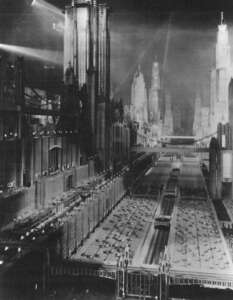
The Bronx: Stone and Law
Kathleen and I were driving through the Bronx on Saturday morning. An even more powerful and disturbing Stone City was on display as we passed the many housing projects that had been built in the Bronx many years ago by  Robert Moses, the “visionary” city planner and developer. This renowned power broker knew it would be “good” for everyone if he took them out of their “nasty” ethnic neighborhoods and offered them the opportunity to live on the 8th floor of an anonymous apartment building.
Robert Moses, the “visionary” city planner and developer. This renowned power broker knew it would be “good” for everyone if he took them out of their “nasty” ethnic neighborhoods and offered them the opportunity to live on the 8th floor of an anonymous apartment building.
Somehow, it never entered his mind (or heart) that many people had invested their identity in the small, crowded neighborhoods where they grew up as second-generation offspring of immigrant parents.
While the urban neighborhoods of the Bronx, Brooklyn, and many other cities are often unrealistically romanticized (e.g. A Tree Grows in Brooklyn or more recently Saturday Night Fever), a glue existed (and still exists) in some New York area neighborhoods. Drawn together by ethnic identity, those living in these neighborhoods had for generations created their own island of culture.
 The same man (Robert Sommer) who wrote about alienating Stone Cities that he identified as sociofugal (pushing from one another) wrote about the way shared culture (music, street art, marketplaces) produced sociopetal (pull toward one another) (Sommer, 1975; Sommer, 1980).
The same man (Robert Sommer) who wrote about alienating Stone Cities that he identified as sociofugal (pushing from one another) wrote about the way shared culture (music, street art, marketplaces) produced sociopetal (pull toward one another) (Sommer, 1975; Sommer, 1980).
What about Robert Moses’ visit? Visionary pictures of his futuristic city during the 1930s? Science fiction movies of the 1930s and 1940s often replicated Moses’ high-rise building and elevated transportation systems. Did his vision come to fruition?
The Bronx buildings my wife and I drove by certainly were not the clean and bright buildings portrayed in Life. These tenement buildings were constructed of brick (not a very futuristic building material). The brick is now often smudged (air pollution) and the technology (elevators, heating systems, etc.) are often in disrepair. The Stone City of the Bronx seems to have replicated the Stone Cities of Soviet-occupied Estonia. Did Robert Moses and urban planners of the Soviet Union hold similar perspectives on how people should live?









